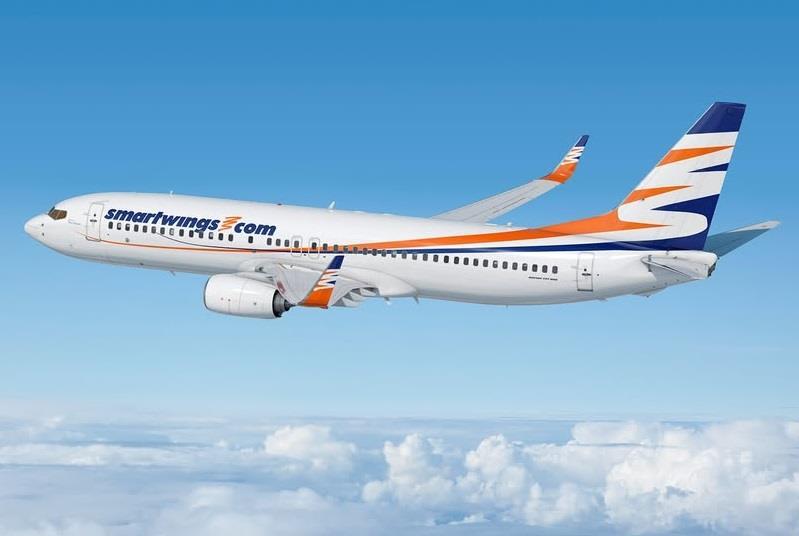A380 flight computers updated after ‘erroneous’ soft-thrust command on take-off
Company
Legal Links
Contact
- +44 7947 753363
- contact@skylineairporttransfers.co.uk
- 6 Walsall Street Bilston Wolverhampton WV14 0AT
Recent Posts
© Skyline Airport Transfers. Created by![]() Beaphoenix WebDesign ltd
Beaphoenix WebDesign ltd
Popular Locations:
Birmingham: Aston, Bournville, Edgbaston, Erdington, Great Barr, Hall Green, Handsworth, Harborne, Northfield, Quinton, Soho, Sutton Coldfield, Amblecote, Brierley Hill, Coseley, Cradley, Gornal, Halesowen, Kingswinford, Lye, Netherton, Sedgley, Stourbridge, Quarry Bank, Bearwood, Blackheath, Cradley Heath, Great Bridge, Old Hill, Rowley Regis, Smethwick, Tipton, Tividale, Wednesbury, West Bromwich, Balsall Common, Bickenhill, Castle Bromwich, Chelmsley Wood, Dorridge, Elmdon, Hampton in Arden, Kingshurst, Knowle, Marston Green, Meriden, Monkspath, Hockley Heath, Shirley, Aldridge, Birchills, Bloxwich, Brownhills, Darlaston, Leamore, Palfrey, Pelsall, Pheasey, Shelfield, Streetly, Willenhall, Bilston, Blakenhall, Bushbury, Compton, Ettingshall, Heath Town, Oxley, Penn, Tettenhall, Wednesfield, Burntwood, Lichfield, Cannock, Rugeley, KIDDERMINSTER, Brierly Hill,
STOURPORT-ON-SEVERN
Coventry: Allesley, Binley, Keresley, Stoke, Tile Hill
Leicester: Abbey Rise, Ashton Green, Aylestone, Beaumont Leys, Bede Island, Belgrave, Blackfriars, Braunstone, Braunstone Frith, Bradgate Heights, Clarendon Park, Crown Hills, Dane Hills, Evington, Evington Valley, Eyres Monsell, Frog Island, Goodwood, Hamilton, Highfields, Horston Hill, Humberstone, Humberstone Garden, Kirby Frith, Knighton, Mowmacre Hill, Netherhall, Newfoundpool, New Parks, North Evington, Northfields, Rowlatts Hill, Rowley Fields, Rushey Mead, Saffron, Southfields, South Knighton, Spinney Hills, Stocking Farm, Stoneygate, St. Matthew’s, St. Mark’s, St. Peters, Thurnby Lodge, West End, West Knighton, Western Park, Woodgate
Derby: Matlock, Ripley, Ashbourne, ILKESTON, SWADLINCOTE , BURTON-ON-TRENT, BAKEWELL,
ALFRETON, BELPER, HEANOR
Telford: Market Drayton, Newport, Shifnal, Broseley, Much Wenlock
Stoke: Stoke-on-Trent, Newcastle, Leek, Uttoxeter, Stone, Stafford
Worcester: Worcester, Droitwich, Pershore, Broadway, Evesham, Malvern, Tenbury Wells
Gloucester: Gloucester, Cheltenham, Stroud, Cirencester, Tewkesbury, Badminton, Berkeley, Blakeney, Chipping Campden, Cinderford, Coleford, Drybrook, Dursley, Dymock, Fairford, Lechlade, Longhope, LydbrookLydney, Mitcheldean, Moreton-in-Marsh, Newent, Newnham, Ruardean, Stonehouse, Tetbury, Westbury-on-Severn, Wotton-under-Edge.
Nottingham: Nottingham, Sutton-in-Ashfield, Mansfield, Newark, Southwell, Grantham, Sleaford
Leicester: Leicester, Hinckley, Loughborough, Melton Mowbray, Oakham Market, Harborough, Lutterworth, Wigston, Ashby-de-la-Zouch, Ibstock, Markfield
Oxford: Oxford, Kidlington, Chipping Norton, Thame, Wallingford, Didcot, Wantage, Abingdon, Banbury, Carterton, Woodstock, Bicester, Witney, Chinnor, Watlington
Chester: Chester, Deeside, Bagillt, Buckley, Holywell, Birkenhead, Preston, Wallasey, Wirral, Neston, Ellesmere Port, Prenton
Airports we serve:
BHX: Birmingham Airport
EMA: East Midlands Airport
LHR: London Heathrow Airport
MAN: Manchester Airport
LGW: London Gatwick Airport
LTN: London Luton Airport
SOU: Southampton Airport
BRS: Bristol Airport
LPL: Liverpool John Lennon Airport
LCY: London City Airport
STN: London Stansted Airport



Airbus has developed a flight-computer software update for A380s after a training flight incident in which two engines received an erroneous thrust roll-back command just after take-off.
The incident involved a “concurrent” thrust reduction to idle after lift-off, says the European Union Aviation Safety Agency.
It has not identified the airframe, the engine positions affected, or the date and location of the occurrence.
But EASA states that the crew had moved the thrust levers from their take-off setting to the climb detent below the thrust-reduction altitude – the height at which climb thrust would normally be engaged.
Analysis found that the primary flight-control and guidance unit generated an “erroneous” soft go-around command with a “valid and reliable” thrust target.
Soft go-around is a function which computes a thrust target – lower than take-off power – to meet go-around performance requirements based on weight, configuration, environmental parameters and other data.
Airbus says the function is a “significant safety and operational improvement” which eases go-around handling for the crew by reducing the high acceleration forces associated with the manoeuvre.
The airframer has issued a service bulletin, dated 9 July, covering a software update to the primary flight-control and guidance unit, intended to prevent cases of uncommanded thrust reduction during soft go-around.
EASA is proposing to mandate the upgrade, which applies to Rolls-Royce Trent 900-powered A380s, with operators required to carry out the work on each affected unit within nine months.
Source link
Share This:
admin
Plan the perfect NYC Memorial Day weekend
Pack only what you need and avoid overpacking to streamline the check-in and security screening…
LA’s worst traffic areas and how to avoid them
Consider using alternative routes, such as Sepulveda Boulevard, which runs parallel to the 405 in…
Turkey’s Pegasus Airlines emerges as buyer of Czech budget carrier Smartwings
Turkish budget carrier Pegasus Airlines is set to acquire Czech Airlines and its low-cost operator…
Babcock to fly L-39 trainers in support of France’s DGA and EPNER test pilot school
Babcock International has secured its first contract to operate a batch of Aero Vodochody L-39…
Safran tasks new UK centre with electric and composite research for future single-aisle
French aerospace firm Safran is internationalising its technology research operation by setting up a centre…
Leonardo Helicopters’ Proteus technology demonstrator poised to make first flight for UK Royal Navy
Leonardo Helicopters has edged a step closer to flying its AW09-based Proteus technology demonstrator for…
Brazil test fires MBDA Meteor missiles from Gripen E fighter in major milestone
Brazil has notched a major milestone in its campaign to phase in Saab’s latest Gripen…
Aeroflot Group discloses acquisition of 747 and 737 freighters
Aeroflot Group has disclosed that eight aircraft – including freighters – have been introduced to…
Airbus cuts full-year delivery target by 30 aircraft
Airbus has cut its full-year delivery target to 790 commercial aircraft, down from the original…
Hi Fly claims Antarctic first with A330 follow-up to A340 landing
Portuguese wet-lease specialist Hi Fly has flown an Airbus A330-300 to Antarctica, claiming a first…
Austria to field 12-strong Leonardo M-346FA fleet from 2028 under $1.75 billion deal
Austria has finalised a roughly €1.5 billion ($1.75 billion) deal that will lead to its…
Avincis and DHC partner on CL-series waterbomber support
Aerial services provider Avincis is to collaborate with De Havilland Canada (DHC) on a series…